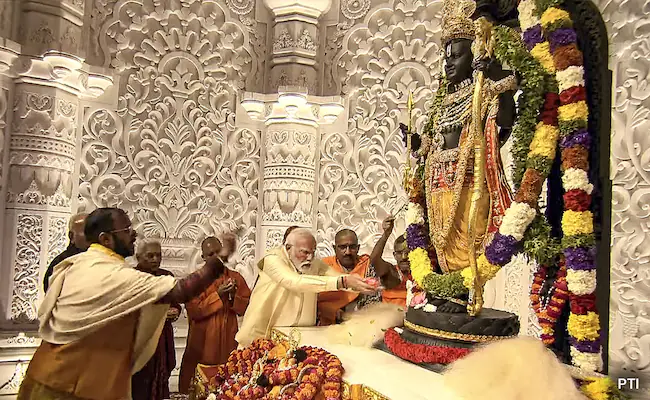Introduction
As a monument of myth, religion, and cultural heritage, the Ayodhya Ram Mandir stands in the historic city of Ayodhya. The epic Ramayana celebrates Lord Rama’s birth there as the righteous prince. The Ayodhya Ram Mandir is therefore extremely important to Hindus. There are many debates and challenges woven into the history of Ayodhya Ram Mandir. An old dispute has been resolved with the completion of Ram Mandir. Devotees seek blessings and celebrate their faith in this building, which is a symbol of hope and peace.
There are elaborate carvings on the pillars, domes, and carvings of the Ram Mandir, resembling traditional Hindu architecture. The temple symbolizes a confluence of emotions beyond its majestic architecture. Others see it as a bridge towards peace and harmony while others see it as a symbol of victory and faith. While the past may hold memories of conflict, the future of the Ram Mandir lies in fostering peace and spirituality. The doors of the temple are open for pilgrims of all faiths and backgrounds. It promises to be a centre of spiritual awakening, cultural vibrancy, and a symbol of India’s rich heritage for generations to come.
History
Built in the sixteenth century, the site was once home to the Babri Masjid. Before the mosque was assaulted and destroyed in 1992, the idols of Rama and Sita were installed there in 1949. The Indian Supreme Court ruled in 2019 that Muslims would receive land elsewhere to build a mosque, while Hindus would receive the contested area for a temple. The Archaeological Survey of India (ASI) report that suggested the existence of a non-Islamic structure beneath the now-demolished Babri Masjid was used by the court as evidence. Critics, however, vigorously contested the ASI assertions, arguing that they were inconsistent and untrustworthy. However, these were rendered ineffective when the Supreme Court.

Ancient and Medieval
A Hindu god, Rama is an avatar of Vishnu. Rama was born in Ayodhya, so the ancient Indian epic Ramayana says. Babur, the first Mughal emperor, is thought to have assaulted and destroyed the temple in 1528 during one of his many raids on temples throughout northern India. Later that year, on Babur’s orders, Mir Baqi, the Mughal Empire’s commander, built the Babri Masjid mosque on the location of Rama’s birthplace, the Ram Janmabhoomi. Joseph Tiefenthaler, a Jesuit missionary, wrote the Latin book Descriptio Indiae in 1767, which contains the oldest known mention of the mosque. He claims that the mosque was built by demolishing the Ramkot temple, which was thought to be the stronghold of Rama in Ayodhya, and the Bedi, where the birthplace of Rama is situated.

Glimpses of Ayodhya Ram Mandir Consecration Ceremony
The consecration turned into a global ceremony with 8,000 people invited, of whom 1,500–1,600 were considered “eminent” guests and others participating through TV and the internet.




